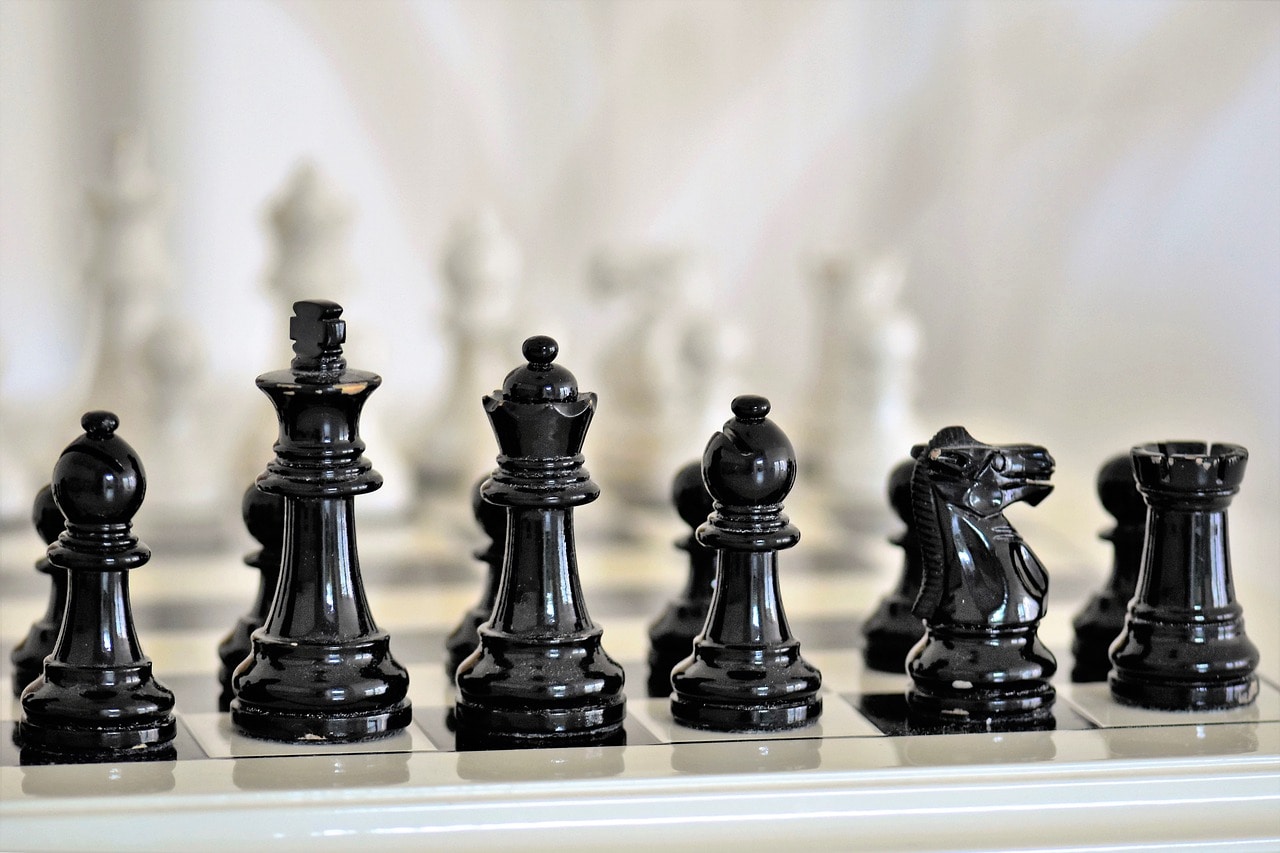How to Castle in Chess: A Beginner's Guide Chess games
1. Understanding Castling in Chess
When playing chess, the rules state that moving one piece at a time is only possible. Except when castling. Yes, that’s right, castling is special because it's the only time where you can move two pieces in a single turn.
Those two pieces are the King and the Rook, and in castling the Rook jumps over the King to the square next to him. However, you can only move them together in a single turn if the correct conditions are met. (A topic you can read more about in the section on castling rules below.)

Two Types of Castling
Before we examine the rules associated with castling in chess, let's look at the two different types of this move that can be performed.
Queen-Side Castling
Queenside castling is the term used to describe castling that happens on the Queen's side of the board. The Queen side of the board is all the columns A through D. It is also the side where the Queen sits when in her original position.
When castling on the Queen side or long castling as it is also known the white King will move to C1 and the Rook to D1. For black the King will move to C8 and the Rook to D8. In this move, the King moves into the Queen's side of the board.
King-Side Castling
Kingside castling is used to describe the castling move that happens on the side of the board where the King is closest to the Rook. This means the King moves from its original position of two squares to square 8E for black and 1E for white. The half of the board where the King is in square 8E for black and 1E for white is known as the Kingside. In Kingside castling the black King can move two spaces to the left to 8G while the white King will move two spaces to the right to 1G. Then the Rook will move to 8G for black and 1G for white.
2. The Rules of Castling Explained
8 distinct rules around castling must be observed if it is performed. Keep reading to find out what they are:
1.Your King is in its original starting space.
Your King must be in the 8E space for black or 1E space for white.
2.Your chosen Rook is its original starting space.
Your Rooks must be in either 8A or 8H for black or 1A or 1H for white.
3.Neither your King nor your Rook has moved previously.
To castle, you cannot move your King or Rook and then move it back to its original starting place. Neither piece can have moved at all to perform this move.
4.There must be no pieces between the King and the chosen Rook.
To castle, there can be no pieces blocking the board between your King and Rook. That means for example if any Knights, bishops or Queens are in the way you will not be able to perform the castle move.
5.The King cannot be in check.
You cannot perform the castling move to move your King out of check.
6.You cannot castle through check.
This means that if your King was to move through a square that would put it under check the castling move cannot be performed.
7.Your King must not end up in check.
You cannot castle into check.
8.Pick up the King first, not the Rook.
Lastly, a rule that many beginners forget is that while castling your Rook jumps your King. This means you should always pick up the King first and not the Rook.
3. Timing Your Castle Perfectly
There is much debate on whether there is a correct time to castle during a game of chess. For instance, some experts recommend that anyone who classes themselves as a novice or beginner should attempt to castle as quickly as they can into a game. The reason for this is that castling provides some distinct benefits (as discussed in the next section below) and provides better safety for your king. This means that by castling those less experienced in chess have a better chance of enduring longer in the game.
Another perspective is that castling should be considered if your opponent has already attempted to attack your king. By castling you can provide additional protection for your King in this situation.
Indeed, also in support of early castling is the view that there are only a few main objectives that those up to an intermediate level should prioritize when playing chess. Castling is one of them along with occupying the center of the board and developing your pieces.
However, other chess experts suggest that there is no perfect time or rule as to when to castle and that it is all part of the skill and excitement of the game.

4. Strategic Benefits of Castling
There are several strategic benefits to castling when playing chess.
1.Castling Gets Your King To Safety
The first major benefit of performing the castling move is that it can help put your King in a safer position. After all, in a single move, you can move your King further to the side of the board more out of harm's way, and if you still have Pawns left, provide an additional layer of protection. However, it's worth considering that if you do not have any Pawns left you may be more vulnerable to being pinned.
2.Castling Activates Your Rook
Another major benefit of the castling move is that it activates your Rook. This means it pulls the Rook towards the center of the board and gets it into a more playable position where it can do more good if used right.
5. How To Practice Castling In Chess
While it can feel intimidating to practice castling while in a match, it is important to get some experience. Happily, you can get all the practice you need by playing chess online either against the computer or with an online partner. Then once you have built up your confidence you can use sites like https://www.247chess.com/ to invite your friends and rivals to play and impress them with your new moves.
Final Thoughts On Castling In Chess
In summary, castling is an action in chess where you move your Kingtwo spaces while at the same time jumping it with your Rook. Several important rules must be adhered to when castling including ensuring that both the Rook and King have not moved before.
There is considerable debate on the timing of when to castle, but most people think that the sooner the better is better for novices. The main benefits of castling are protecting your King while activating your Rook.
Seasonal Chess Games
More Games
Chess News
Disclaimer
DISCLAIMER: The games on this website are using PLAY (fake) money. No payouts will be awarded, there are no "winnings", as all games represented by 247 Games LLC are free to play. Play strictly for fun.

































